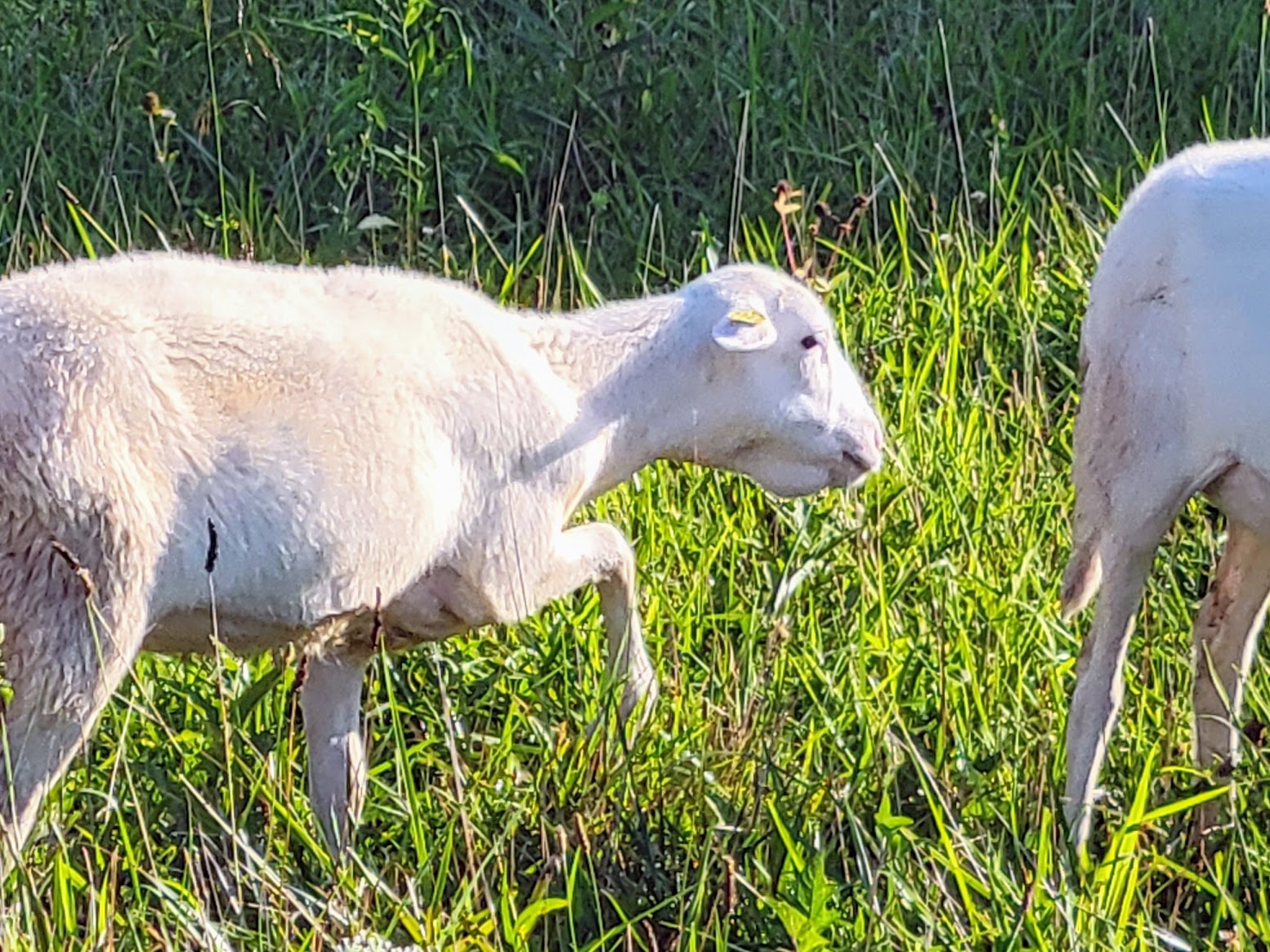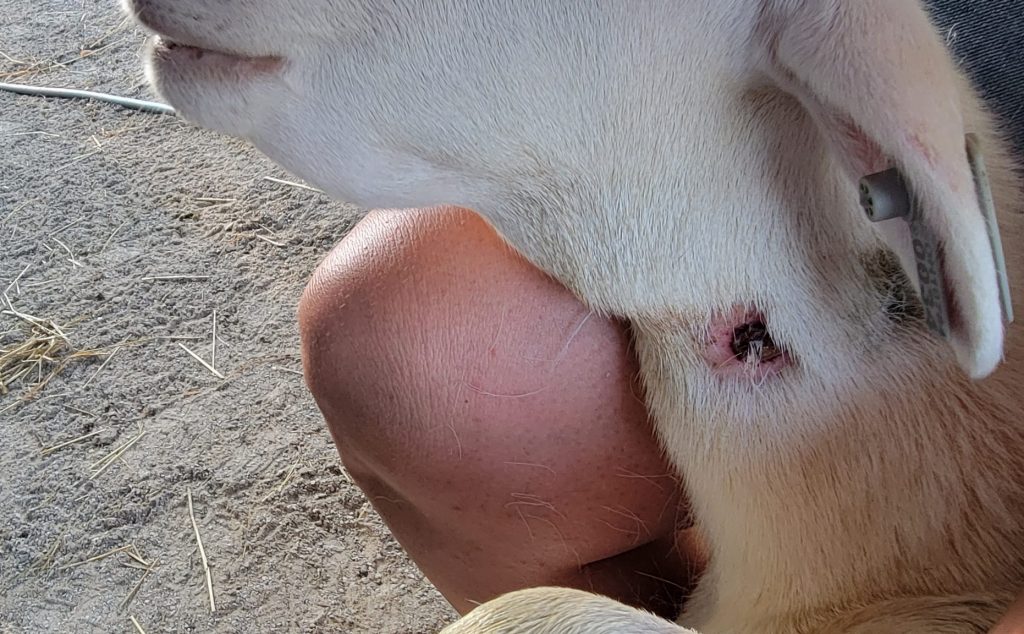“Doctors are taught ‘when you hear hoofbeats, think horses not zebras,’ meaning a doctor should first think about what is a more common—and potentially more likely—diagnosis. When I first saw this little lamb out in the pasture with a swollen jaw and droopy demeanor, I thought of the horses. I immediately assumed she had a condition known as bottle jaw. Lambs usually get bottle jaw because they have developed anemia due to a heavy parasite load. Specifically, barber pole worm is the most common suspect. But wait … St. Croix sheep are supposed to be super resistant to those, right? Yep. As you can imagine, I was horrified!
Examination
I gathered my deworming agents (Cydectin and Valbazen) plus iron and Power Punch to help with anemia. Luckily, I have those on hand after dealing with a parasite-susceptible Katahdin lamb. I caught this little ewe lamb and examined her. Because I was thinking horses, not zebras, I was looking to confirm that she was overloaded with parasites. I was surprised to discover that her eye membranes were a beautiful red, giving her a FAMACHA score of a perfect #1. She was absolutely not anemic, so no need for de-worming. A quick look at my records confirms that her fecal egg count three weeks ago was only 400epg. So what is this?
Misdiagnosis
Because I was thinking horses, not zebras, I focused all my attention on her face and jaw. I decided that she must have been stung by a bee or wasp, or eaten something that had irritated her lips. She was acting droopy though, and had a slight temperature of 103.5. I decided to give her some Banamine to help reduce the fever and any discomfort she was experiencing. I then turned her back out with the flock.
Eureka!
The next morning, I went out to the pasture to check on her. She still had a swollen jaw, and was still acting droopy. As she walked by, I saw something on her neck. WHOA!! What is THAT?! How did I miss that when I had her in my hands yesterday?! She has an open wound, about the size of dime, that is devoid of skin and clearly infected. After consulting with my vet, I cleaned the wound using lots of cool water and iodine wash. I sprayed it with Veterycin. I also gave her another dose of Banamine after checking her temperature, and a dose of LA200. My vet suggests I clean the wound every day or two with plain cool water and to reapply the Veterycin spray. She should be good as new in a few days.
The Lesson
First, when you do an examination of your sheep, be thorough. Don’t look only for what you expect to find. Second, never rule out the zebras until you are certain you are really dealing with horses.


